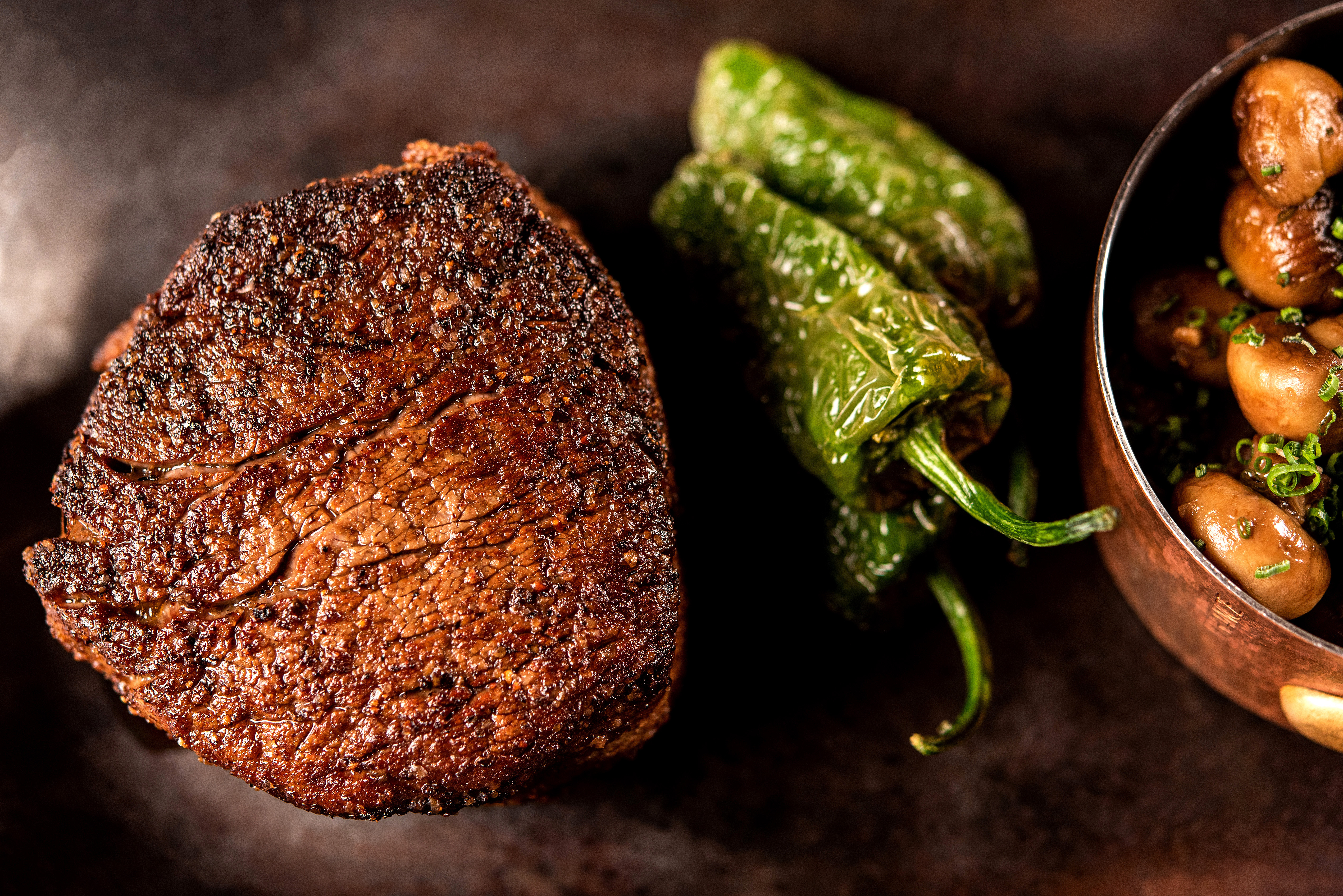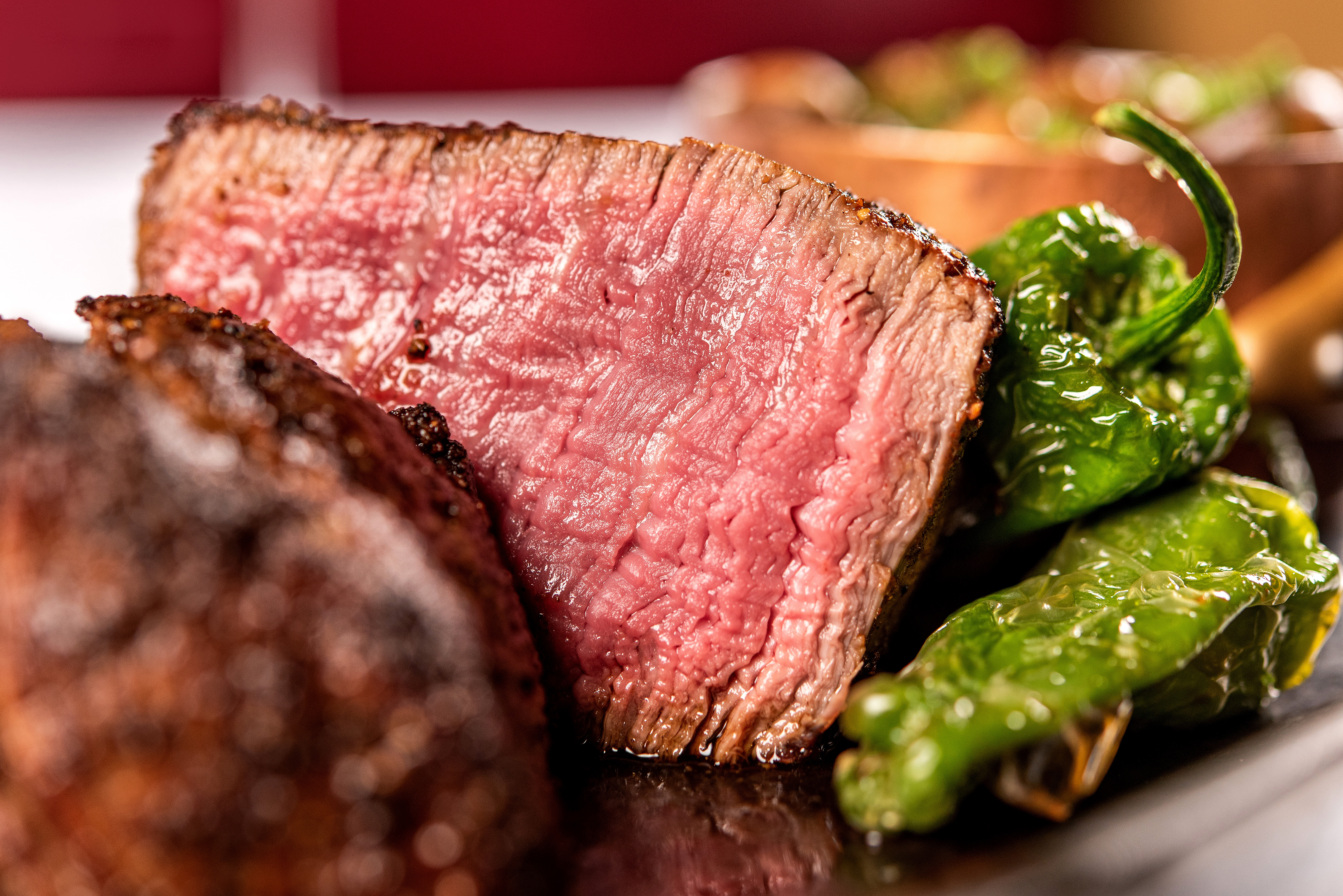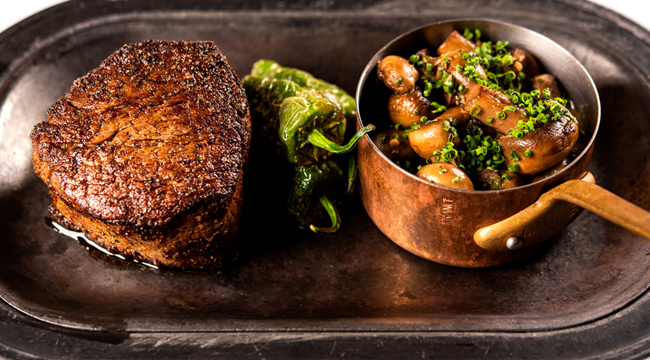There are certain things everyone should learn how to do. We’re not talking about those dumb, often gendered “adulting” rituals. We’re talking seriously handy skills. You should know how to change a tire, mix at least one great cocktail, sew a button or a patch, manage your money, take a dope photo, and cook (at least a little). While we appreciate the joys and conveniences of eating out as much as anyone, there’s a true feeling of accomplishment achieved with a little DIY meal prepping.
If you eat meat, knowing how to cook a good steak should be atop your kitchen skills priority list. Mostly because, if done right, you can make it better than any steakhouse. Of course, if done wrong, you’ll only succeed in making shoe leather, so you need to make sure you have the fundamentals down. To help you not screw up your steak, once and for all, we brought in Nick Flores, a ringer from RingSide –– the legendary Portland, Oregon steakhouse where he’s the head chef. Flores pairs a Portland-artisinal approach with RingSide’s 75 years of experience, making his expertise invaluable for upping your steak game.
1. Get The Right Cut For The Right Occasion
If I am going to have friends over I would probably get a rib-eye or a New York half strip. Depending on the size of it, a few minutes on each side. Get a nice crust. Go pretty aggressively with the salt and the coarse ground black pepper, you’re going to get a nice textural contrast. With a New York, especially if you get a really nice prime cut, it’s a good balance of marbling, tenderness. It presents well.
Skirt steaks, ribeyes, even flank steaks are really good for grilling. I tend to stay away from the tenderloin. It’s a lot leaner. But for a backyard barbecue, the rib eye is the way to go.
Top sirloin is the part of the animal that carries the weight. It’s going to be a little bit leaner. It’s going to be a little tougher, but because of its role as a muscle, it holds a lot more flavor.
If you want something that is more on the tender side, the ribeye has a good amount of marbling.
A chuck is actually what I go with. It’s a weird answer — not one you would often hear from someone working at a steakhouse — but cook it mid-rare, slice it nice and thin, and you’ll have a great cut. A lot of beefy flavor to it.
2. Remember To Take Your Meat Out Of The Fridge Before You Begin
Let it come up to room temp. If you pull your steak out when it’s cold and slap it right on to your grill or your cast iron pan, it takes a lot longer to get the internal temp to where you want it. You get more of a ring, as far as temperatures go, rather than a nice even mid-roast. I like to pull it out about a good 15 mins, sometimes even 30 minutes before cooking. It depends on the thickness of it.
If dealing with frozen meats, the best way to go about it is to take it out and just let it thaw out slowly in your fridge rather than running hot water over it. Give yourself enough time to just let it thaw out.
3. Start Hot

Anywhere from a medium-high to high heat. If you have a thinner cut, you need to get a crust on it, or you’re looking to get a crust on it, definitely high heat.
If I’m cooking a New York at home I’ll start my cast iron pan. I’ll start to let it get a little smoke, throw my steak in and then I’ll turn the heat down to about a medium-high. And then I’ll let it roll for a few, 4 to 5 minutes, to get that nice crust.
If you’re dealing with a flank or skirt steak on the grill, definitely high heat so you can get that good char, get that crust on there. If you don’t, you’re just going to end up with more of a steamed kind of texture. That’s not the way to go.
4. It’s Okay To Use a Thermometer, But Here Is What The Pros Do
If it’s your first go-round, it’s all right to use a thermometer. Actually, if you’re overthinking it and poking at it a hundred times in 5 minutes, it’s not a good idea. There’s an old trick that by the feel of around where your thumb and the back of your hand come together, you can test for the firmness of the steak. Right in between, right where the back of your hand and thumb come together, it’s really soft [more on that technique here]. That’s a good measure of rare to mid-rare and so forth.
A lot of us will have a very small, metal pick. Almost like a toothpick — so that rather than waiting for the thermometer to show the proper temp, you give it a quick poke with that and you feel the heat that it conducts and you get a pretty good feel of where your steak is at. A mid-rare is going to have a cool, pink-red center and you can feel that the farther up you go. Medium, as well. The texture gets a little bit warmer.
5. Season At The Last Minute
I like to season right at the very last minute. Coarse salt and coarse black pepper will give you a nice crust. I like to go heavy with it.
We (Ringside) actually did a test that I’ve never talked about before. We experimented with seasoning the steak with 12 hours before cooking, five hours, one hour and then right before the steak was fully-cooked. And we’re looking at a lot of different things. One, the consistency of the seasoning throughout the steak or of all the surface of the steak, and two, the actual crust that you got from it.
We took all of our steaks at the Ringside Steakhouse and put them on a plancha, or a flat top. What tends to happen, and this just goes with anything you add salt to, the salt penetrates more over time and what we found was the longer the salt seasoned the steak, the more of a cured flavor or nature it took. Cure, as in, how bacon is cured. Bacon sits on a salt mixture for days. We felt that you lost some of that natural beef flavor.
6. Follow Your Own Tastes
There are so many different spices in the world. You can go very simply — paprika, garlic, salt, pepper. You can throw some cumin in there. Coriander, depending on the different types of cuts, whatever kind of steak your dinner is.
Sometimes when I’m cooking at home, once I’m about done with the steak I’ll take it out of the pan, dip it in whiskey and a little bit of soy sauce, and throw it back in the pan. I’ll do that two to three times and then I’ll finish the pan with a little bit of butter and another splash of whiskey and pour that over the steak.
7. When In Doubt, Under-Season
It’s always worse to over-season. What I tend to do is have a nice finishing salt like Jacobson’s. After you slice the steak, just take a little bit of that and sweep it over the top so you get a little element of texture in there. You get another little top serve of saltiness with each bite. But if you’re just starting, I would definitely go under — especially if you’re not used to seasoning or you don’t really know where your preference is at.
8. Throw The Butter In At The End
Don’t start with butter. Just use a very small amount of cold-pressed canola oil or vegetable oil. If you have a well-marbled steak, you’re going to get a lot of the fat to come out of the steak, that’s going to be your oil or butter in the pan. You can baste it with a little bit of that once you finish.
The last couple minutes I would throw a little knob of butter in the pan and just kind of baste it, maybe throw a smashed clove of garlic too.
9. Always Let Your Steak Rest

This is the biggest/ most common mistake people make as a home cook. The bigger the piece of meat, the longer you want it to rest.
An eight-ounce to a 16-ounce steak, whatever it may be, filet, New York, rib eye, a solid 5 to 10 minutes is a good resting time after you cook it to the temp you want. That allows all of the natural juices to recirculate through. The steak relaxes, all the juices go back.
When you’re cooking, the water is moving as you apply heat to it. If you slice into it right after you pull it off your grill or out of the pan, it’s just going to run right out and it’s going to create a dry, tough steak. No matter what temp you cook it at.
If you have a roast, prime rib roast, I would give it a solid 30 to 45 minutes. If it’s not hot enough for you at that point, go ahead and flash it back in the oven really quick. Flash it right back on your cast iron pan. Get some heat back on it and then go ahead and slice it. Definitely give it a rest though.








